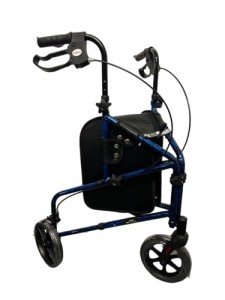
6
MaySee What Walking Aids Tricks The Celebs Are Making Use Of
Walking Aids: Enhancing Mobility and Independence
walking aids (www.Mymobilityscooters.uk) are important tools designed to help individuals with mobility difficulties, allowing them to move easily and comfortably. These devices can significantly improve autonomy, improve posture, lower the risk of falls, and increase overall quality of life. This article explores different kinds of walking aids, their benefits, considerations for use, and ideas for selecting the ideal aid. Furthermore, a detailed FAQ section addresses common questions about walking aids.

Types of Walking Aids
Walking aids come in numerous forms to accommodate various needs and preferences. Below is a categorized list of the most commonly used walking aids:
1. Canes
- Basic Canes: A single straight walking stick for fundamental support.
- Quad Canes: Canes with a Compact Four Wheel Walker with Seat - Lightweight-pronged base for increased stability.
2. Walkers
- Standard Walkers: Frame-like gadgets that supply assistance on all sides, excellent for those with limited strength.
- Rolling Walkers (Rollators): Equipped with wheels, these enable users to stroll with less effort and come with seats for resting.
3. Crutches
- Axillary Crutches: Used under the arms; appropriate for short-lived mobility concerns.
- Forearm Crutches (Lofstrand Crutches): Designed for long-term use, they need grip strength and are lighter than axillary crutches.
4. Wheelchairs
- Handbook Wheelchairs: Require user effort to move, supplying flexibility and independence.
- Electric Wheelchairs: Battery-powered alternatives appropriate for users with restricted arm strength.
Benefits of Walking Aids
Walking aids use many benefits that contribute to improved mobility, safety, and independence. Some essential benefits consist of:
- Increased Stability: Walking aids supply extra points of contact with the ground, reducing the threat of falls.
- Boosted Mobility: They make it possible for movement over greater ranges, enabling people to participate in social activities and daily tasks.
- Pain Reduction: Properly fitted walking aids can relieve pressure on joints and lower pain related to various medical conditions.
- Improved Confidence: Using a walking aid can increase a person's confidence, encouraging them to explore their environment without worry.
- Posture Support: Aids assist maintain proper alignment and posture, decreasing pressure on the back and hips.
Considerations When Choosing Walking Aids
Choosing the ideal walking aid is crucial for safety and efficiency. Here are some aspects to consider:
1. Private Needs
- Evaluate the level of support needed for mobility.
- Consider whether momentary or long-term support is essential.
2. Environment
- Assess the surface and surfaces (indoor vs. outdoor) where the aid will be utilized.
- Guarantee that the walking aid appropriates for stairs, ramps, or uneven surface areas.
3. Weight and Portability
- Examine the weight of the walking aid and if it can be transferred easily.
- Lightweight options are more suitable for those who might require to lift or stow the aid often.
4. Comfort and Fit
- Ensure the walking aid is adjustable and fits the user's height.
- Consider grips, armrests, or seats that provide comfort for extended use.
5. Budget plan
- Determine a budget for the walking aid while thinking about the quality and features necessary for the user's safety and comfort.
FAQs About Walking Aids
1. Who should use walking aids?
Walking aids appropriate for individuals recuperating from surgical treatment, those with persistent discomfort, seniors experiencing balance problems, or anybody with a mobility difficulty.
2. How do I pick the ideal height for a walking aid?
When standing straight with great posture, the top of the walking stick or Rollator Walker should line up with the wrist bone. A healthcare professional can supply assistance throughout fitting.
3. Can I use a Walker With Seat on stairs?
While it's typically not safe to use a walker on stairs, some walkers are created specifically for stairs with features that enhance stability. Constantly speak with a physiotherapist for personalized guidance.
4. How can I maintain my walking aid?
Regularly look for loose parts, wear and tear, and tidy the gadget according to the maker's directions to ensure safety and longevity.
5. Do walking aids help with balance?
Yes, walking aids can provide the needed assistance and stability, helping to avoid falls and assist with balanced motion.
Walking aids are important gadgets that empower people with mobility challenges to keep independence and enhance their quality of life. By comprehending the numerous kinds of walking aids, their benefits, and necessary factors to consider for selection, users can make educated decisions customized to their requirements. Whether for temporary assistance or long-term use, the right walking aid can change daily routines and boost overall well-being.
| Type of Walking Aid | Features | Best For |
|---|---|---|
| Walking canes | Single or quad bases | Moderate assistance |
| Walkers | Repaired or rolling alternatives | Lower body weakness |
| Crutches | Axillary or lower arm models | Short-term mobility issues |
| Wheelchairs | Handbook and electrical options | Serious mobility constraints |
Embracing the best walking aid can cause newly found liberty and a more active lifestyle, promoting self-reliance and social engagement. As constantly, consultations with health care professionals can offer customized suggestions to make sure safety and efficiency in utilizing walking aids.
Reviews